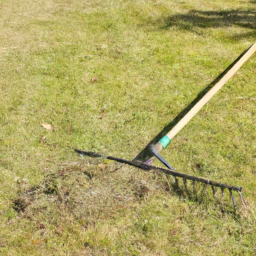How To Clear Garden Full of Weeds
How To Clear A Garden Full Of Weeds
How To Clear A Garden Full of Weeds
Pruning is integral to keeping a garden in top shape. With a bit of knowledge and the right tools, reviving a garden full of weeds is a simpler task than you may think. Whether you're clearing a plot for a new garden or just looking to tend to an existing one, here are the best practices to get your garden back to being weed-free.
Identifying and Removing Weeds
Step One: Identifying the Problem
Ample sunlight and water, crucial elements for a healthy garden, also contribute to a garden full of weeds. Identifying the type of weed is essential before proceeding with the removal process. To help determine the type of weed present in the garden, consider the plant's characteristics. Do the weeds have broad leaves than other creeping weeds? Are the leaves pointed or are they long in length? Answering these questions can help you identify the type of weed, aiding you in selecting the best removal method.
Step Two: Carefully Remove Weeds
Once the weeds have been identified, you can begin to remove them by either hand-pulling or using a hoe to dig them out. To eradicate the weeds, it's highly recommended to use gloves and a long-noped weeding tool to pull the long-rooted weeds from the ground - the roots must be removed or the weeds will regrow.
Step Three: Soil Care
It is essential to take proper care of the soil to ensure a healthy garden and reduce weed issues. Too much or too little water can lead to weed growth; therefore, keeping an eye on the water need and adjusting your watering schedule is essential in weed prevention and control. Applying mulch, pulling weeds regularly, and loosening soil will also help reduce weed growth.
Killing Weeds without Chemicals
Step One: Cover the Area
An easy and efficient way to kill weeds without the use of chemicals is to cover the area. Using newspaper or cardboard, cover the weeds and moisten the area to create steam or heat. As the weeds suffocate, they will deplete from the soil, eventually killing the weeds - and the roots.
Step Two: Boiling Water
Boiling water is also an effective weed-removing tool. Although boiling water may also kill the surrounding grass as well as the earthworms, it will ultimately kill the weed.
Step Three: Salt Solution
A salt solution can do wonders for weeds. Diluting just salt with a gallon of water and pouring it over the weeds is highly-recommended. The salt water disrupts the plant's moisture balance, quickly killing them.
Herbicides as an Option
Although chemicals should be avoided and are considered the last resort, herbicides may be used depending on the condition of the garden. Pre-emergent herbicides are drizzled onto the soil to prevent weed growth.
Spraying weeds with a contact herbicide is one of the most efficient methods of killing weeds. A contact herbicide should only be used when needed since it will target any plant it comes in contact with. Herbicides may be a quick and efficient option, yet they can be hazardous because of potential runoff that could contaminate groundwater.
Brief Recap
A garden full of weeds is quite a hurdle to overcome. However, with the right process and tools, you can be on your way to having the garden you need. After identifying the types of weeds present, removal should be done by either manually pulling the weeds or using a tool such as a hoe. Taking proper care for your soil is the best way to prevent and control weed growth. Additionally, there are many ways to remove and kill weeds without the use of chemicals. Although herbicides are, unfortunately, the most efficient way to get rid of a garden full of weeds, their harm to the environment should be taken into consideration.
It is crucial to remember that gardening is a journey in itself, requiring patience and caring. In time your garden will flourish, add your style, and become an expression of yourself.

Previous Page
